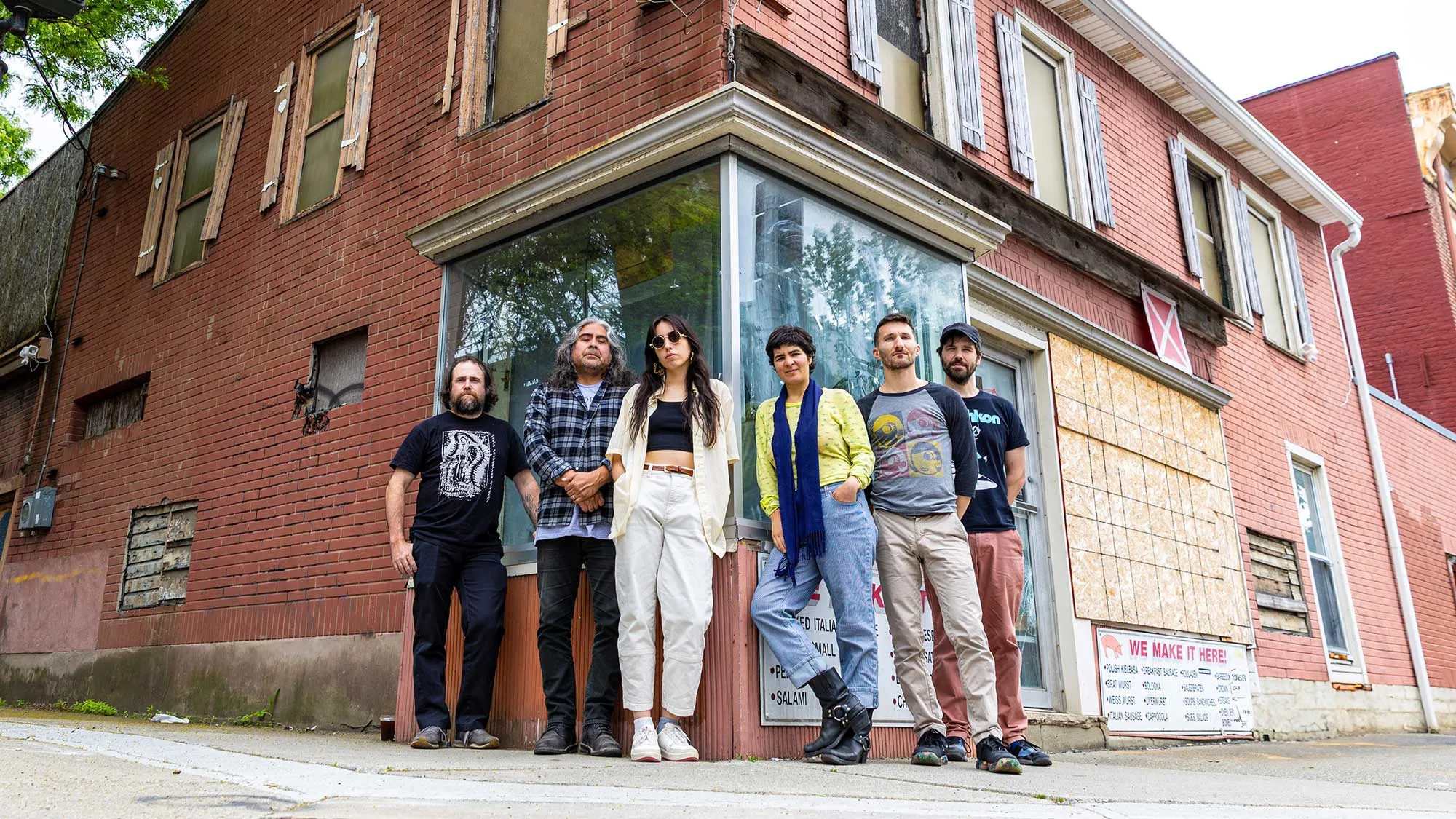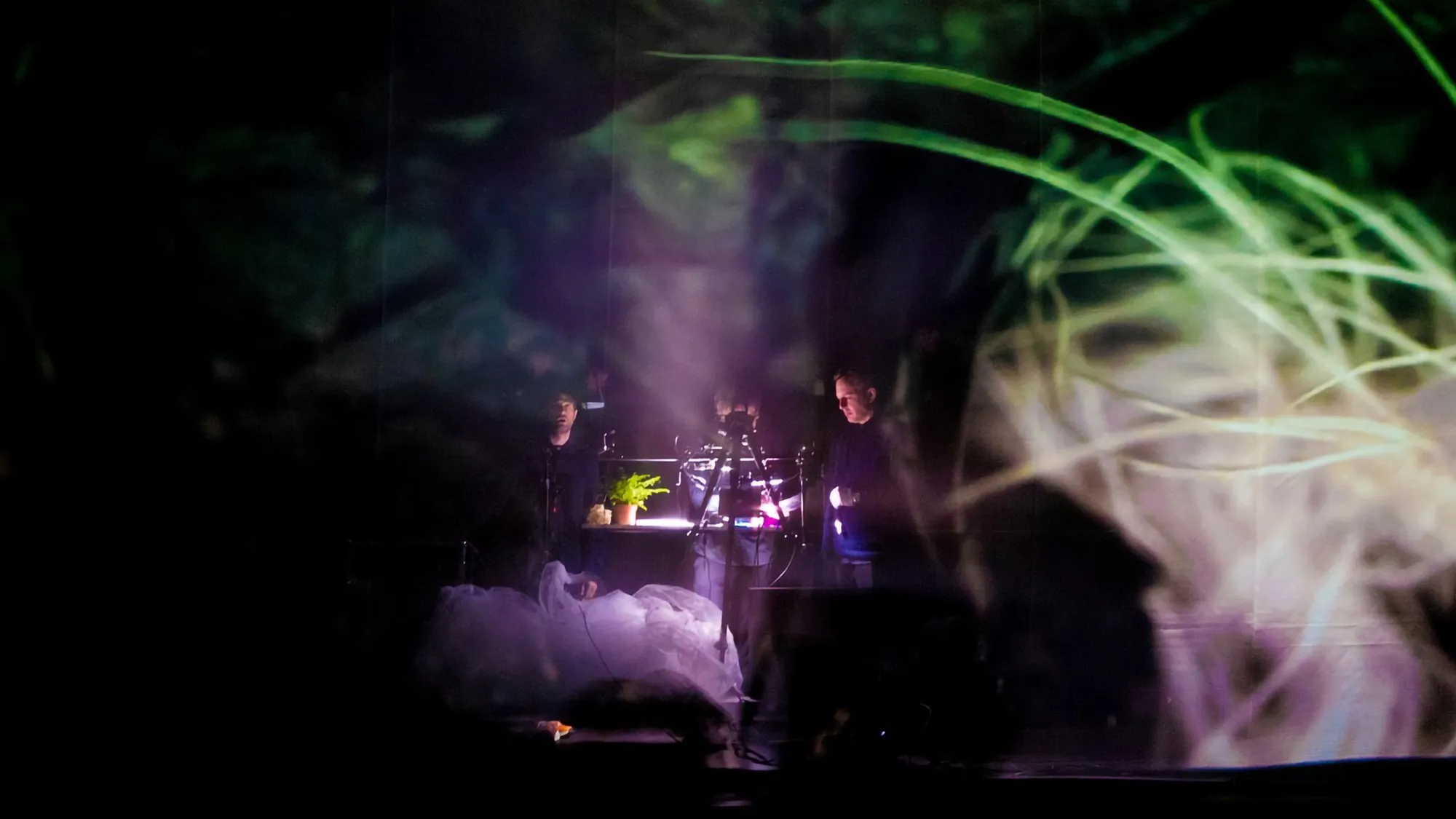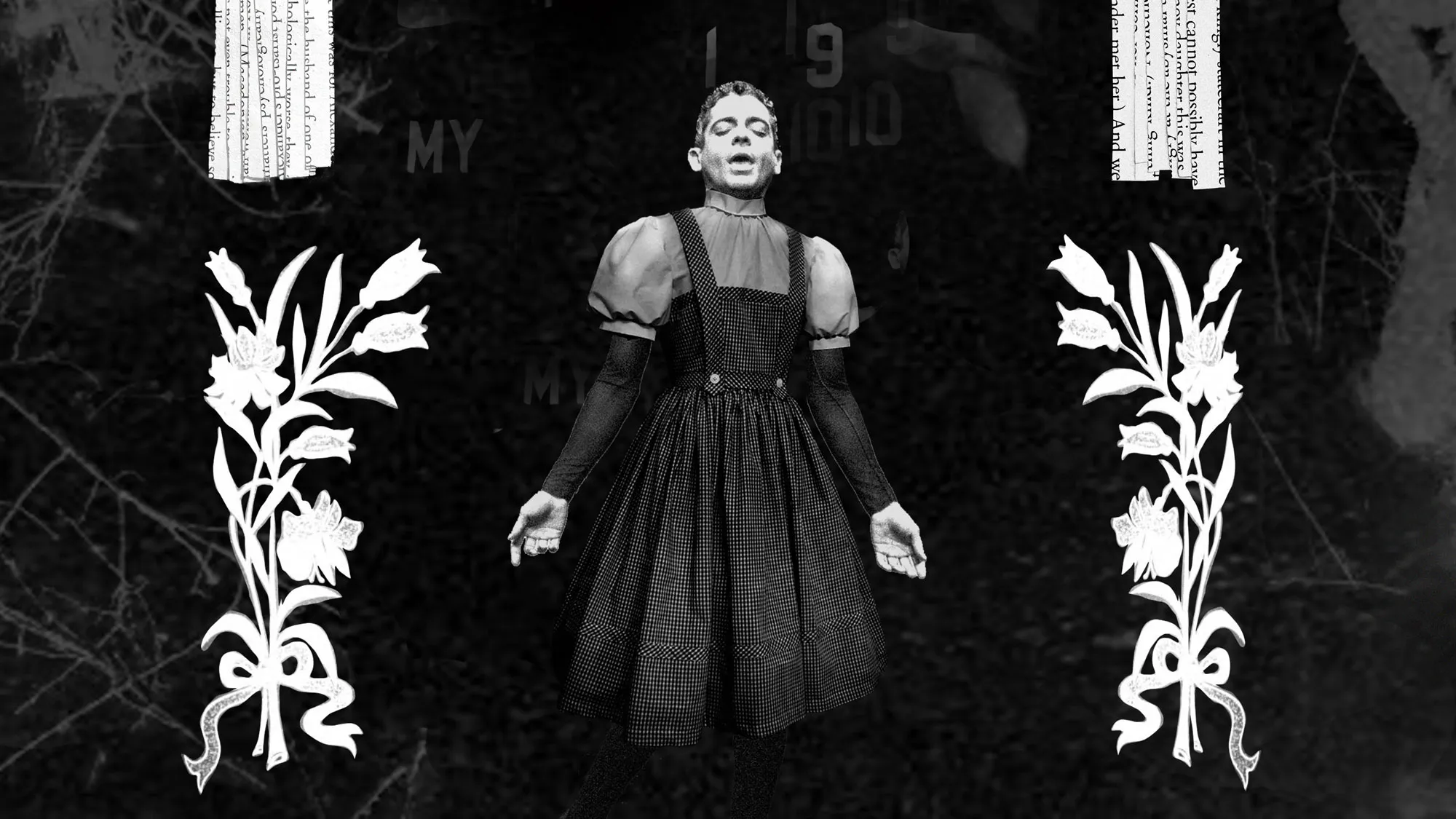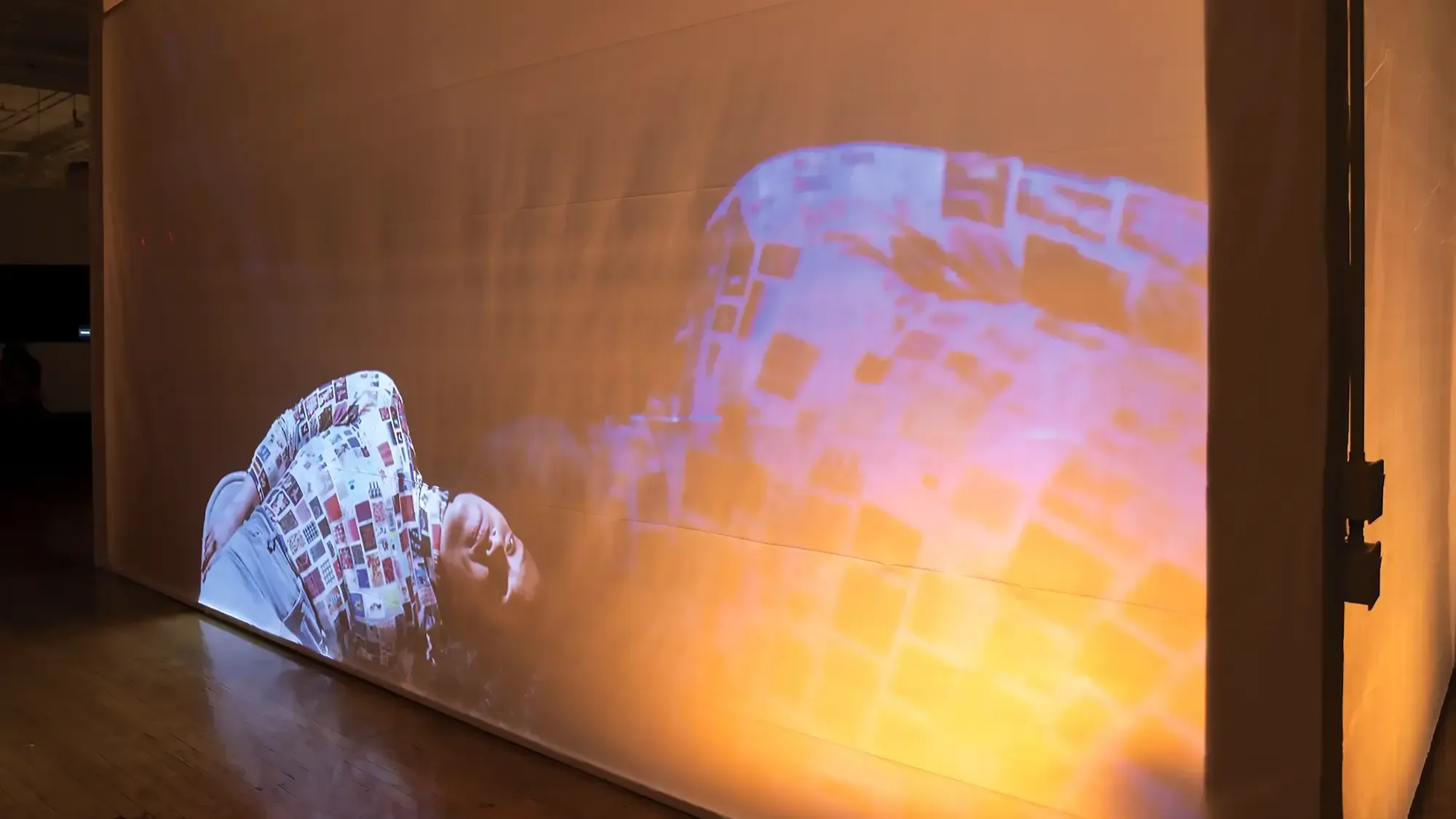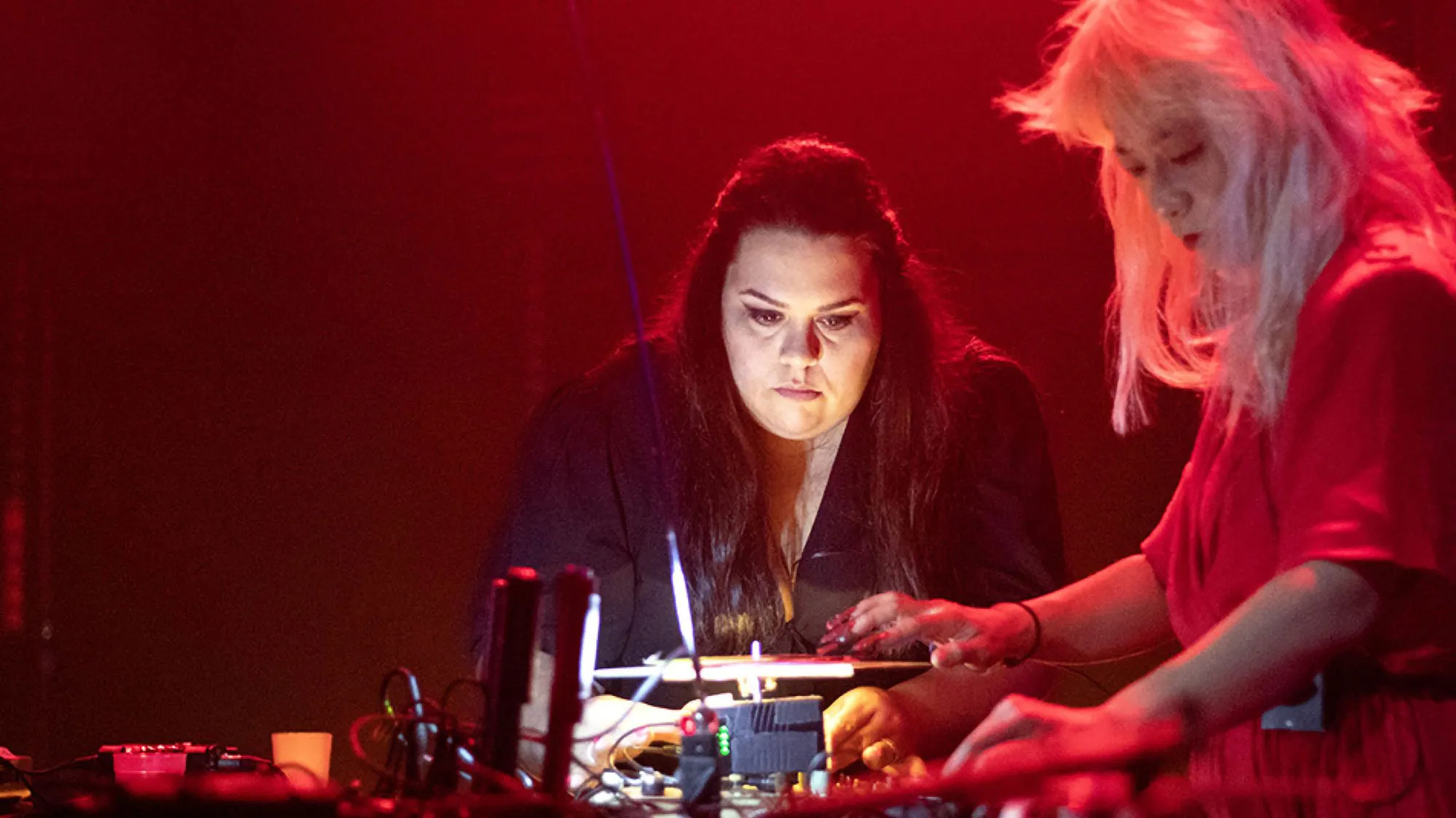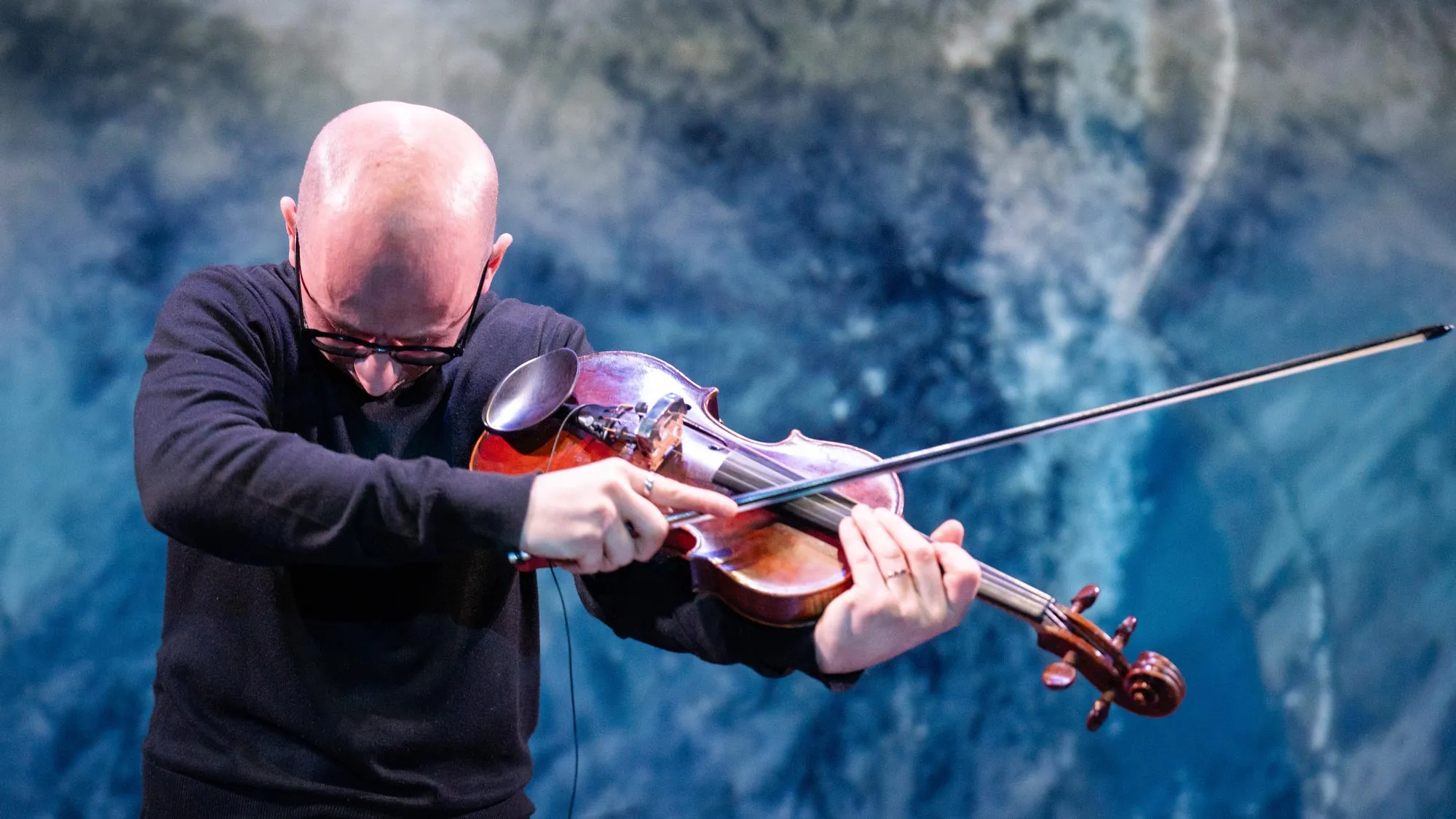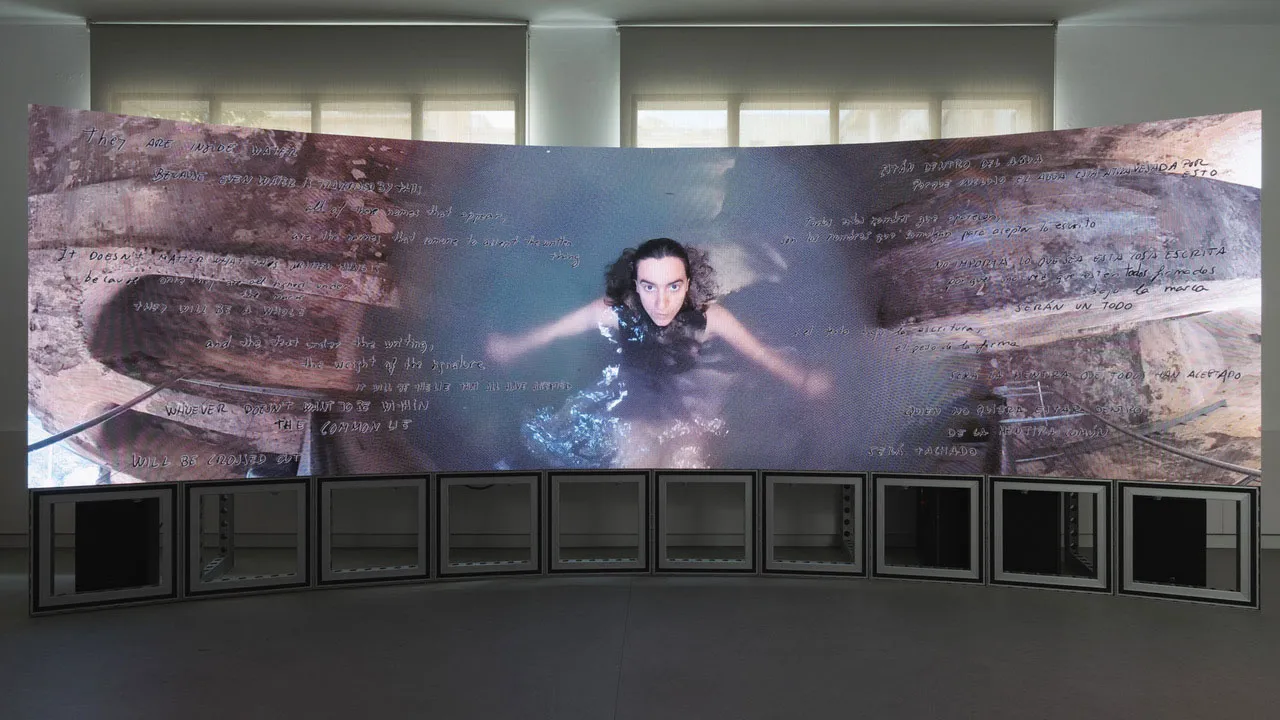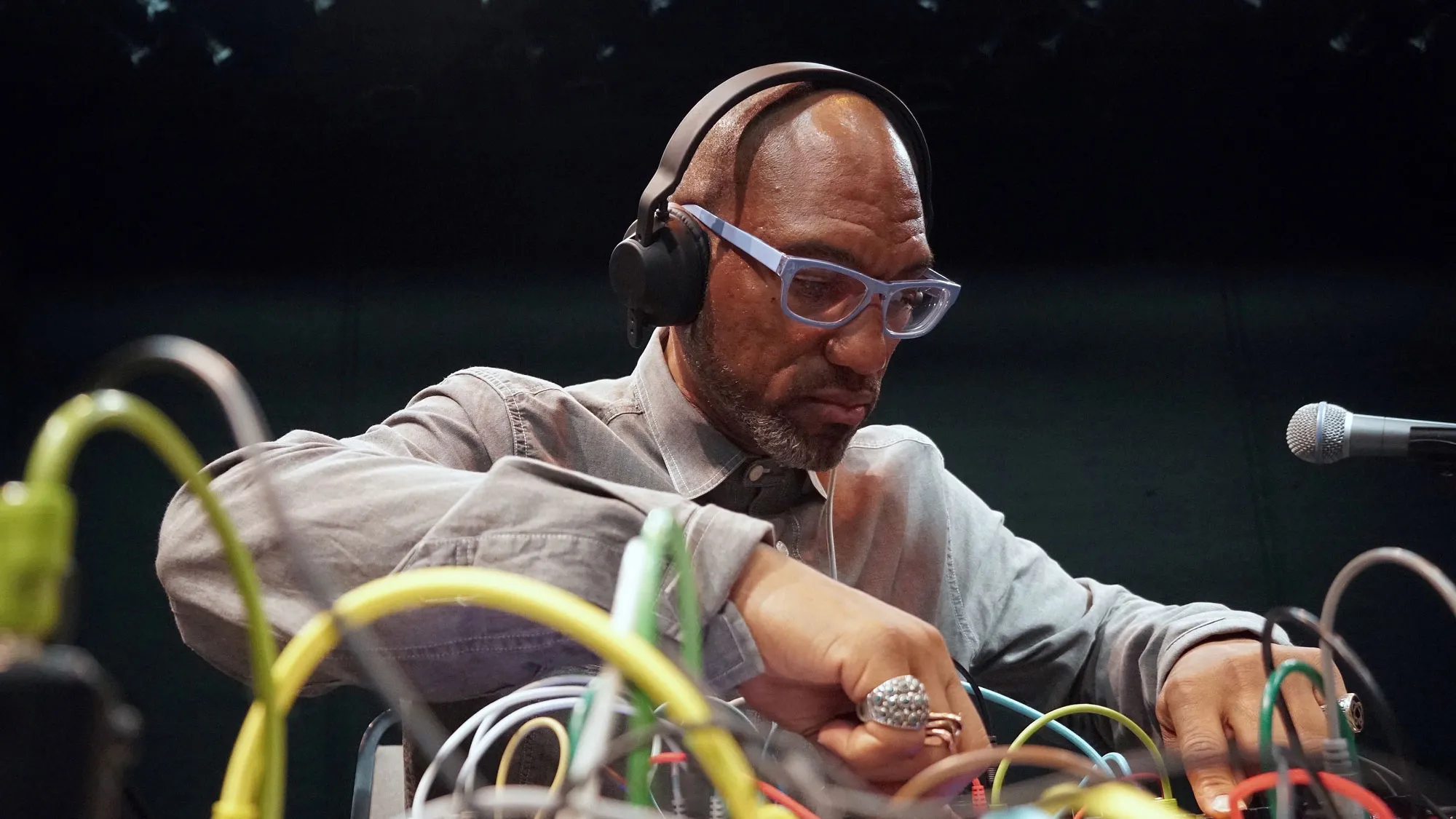
King Britt presents Liberation Meditations: A Call
Pioneering producer, composer, and performer King Britt brings Liberation Meditations: A Call to TOPOS, joined by collaborators Suzi Analogue and Myles Ortiz-Green. Within the 39-speaker spatial soundscape of EMPAC Studio 1, turntables, analog synths, and digital textures are marshalled to move bodies–physically, emotionally, spiritually.
This is dance as ritual, rhythm as resistance. The topoi here are movement, celebration, and gathering—a communion forged through frequency and vibration:
“In times of chaos, the practice of centering oneself becomes not merely beneficial, but essential. Music (and movement) have long served as vital instruments of liberation and spiritual practice,” King Britt says, “functioning as forms of sonic centering. Mantras, in particular, have held a profound role in facilitating ritual connections to source energy, often yielding tangible physical and mental healing. These practices have been especially crucial to the endurance and resilience of communities of color.”
Liberation Meditations: A Call draws from deep archives—historic speeches, interviews, fragments of collective memory—reframed and recomposed as mantras grounded in the ethos of freedom. The result is an improvised, immersive, and spatial offering: healing in intent, ancestral in knowledge, futuristic in sound.
Together, King Britt, Suzi Analogue, and Myles Ortiz-Green, seek to elevate the mind, body, and spirit, to create a space for collective resonance and transformation.
Main Image: King Britt, Courtesy the artist.
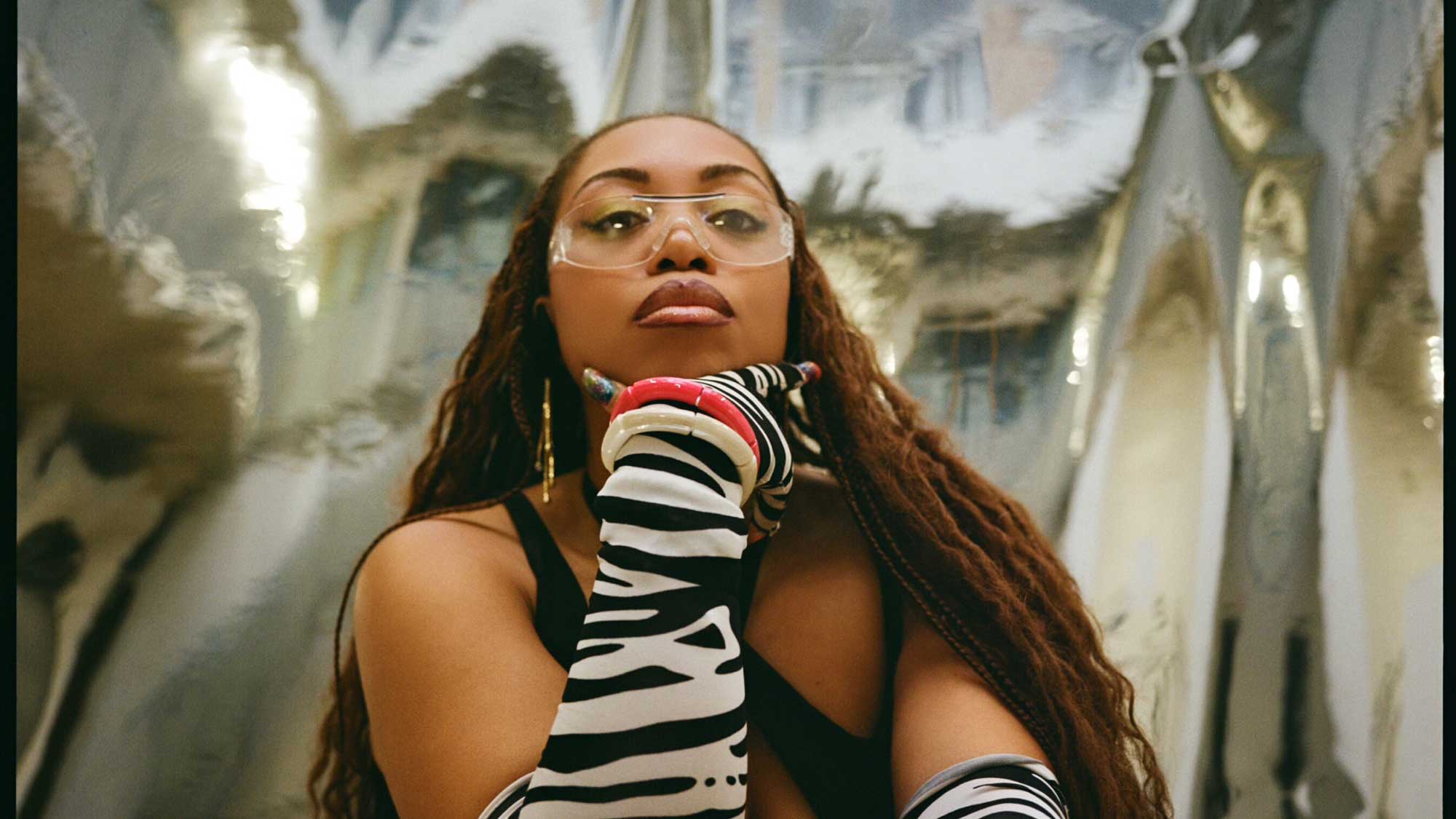
Suzi Analogue, Courtesy the artist.
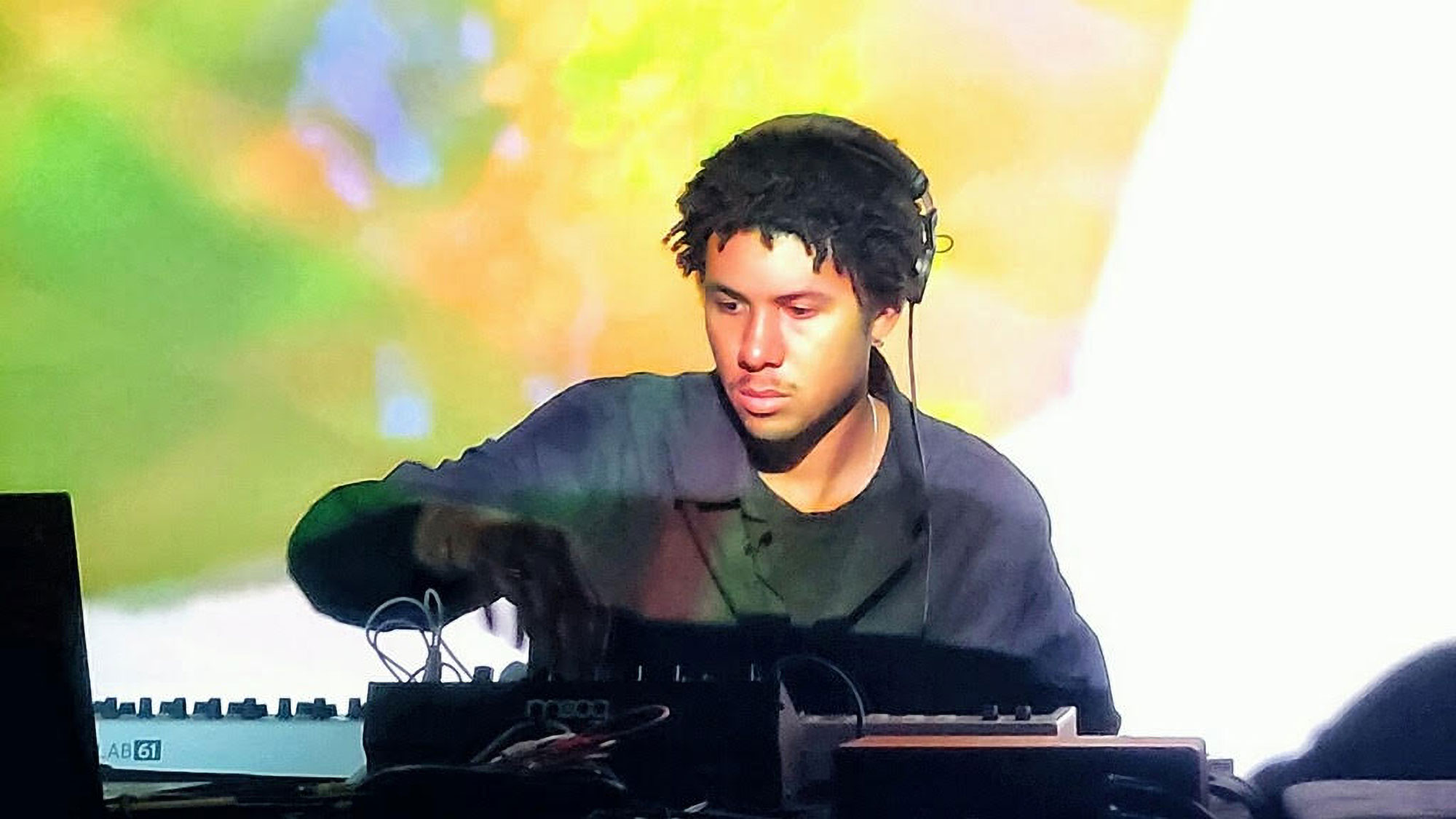
Myles Ortiz-Green, Courtesy the artist.
immerse(d) digital 004: Performance by King Britt
